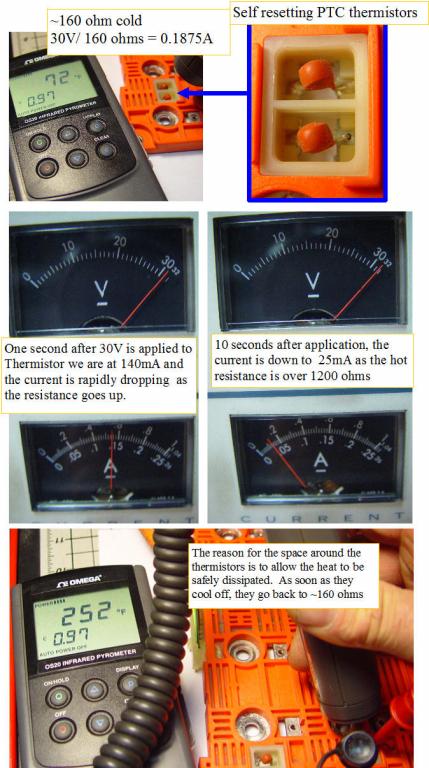The PTC thermistors
|
 | |
|
Protecting against a short like a self resetting fuse
|
Several years ago I did some experiments to figure out what the red thingies on the battery packs were, and what they are for.
I hit one with a heat gun, and saw the resistance shoot up from ~ 160 ohms to over 600 with a quick blast. I explained my findings on Insight central, but someone else tried the test in an oven, and was not able to duplicate what I found.
I finally found myself with a loose Insight side terminal plate in my hand, and decided to put my original theory to a different type of test.
I set up my lab supply with 30V, and the current adjustment was set to the 1 A maximum for the supply, so no power supply current limiting would be involved.
I clipped two probes to the thermistor leads, and used one of the banana jacks as an on off switch. On first application of the voltage, the current pulsed up to just about the expected 185mA, but rapidly over only a few seconds the current dropped to only 25mA and the thermistor was at 250 degrees F. I held it for a minute, and the thermistor stayed at the 250 f.
If the battery tap cable was crushed and all wires shorted, all that would happen would be for the battery end plate to get warm. Nice safety. Swap crushed cable, and the battery pack is good to go.
A self resetting fuse.
|
|